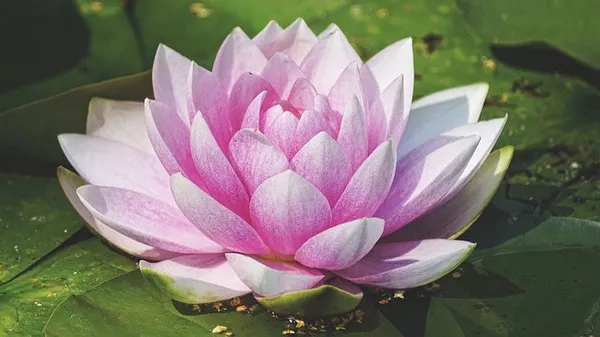The lotus flower, with its exquisite beauty and captivating symbolism, holds a special place in the hearts of many cultures and religions worldwide. Throughout history, this aquatic plant has been revered as a symbol of purity, spiritual enlightenment, resilience, and growth. From ancient civilizations to modern societies, the lotus continues to inspire and resonate with people on a profound level. In this comprehensive article, we will explore the diverse meanings and cultural significance of the lotus flower, uncovering the deep-rooted symbolism that transcends time and borders.
The Resilient Nature of the Lotus
One of the most prominent and universally recognized aspects of the lotus is its resilience and ability to rise above adverse conditions. Growing in muddy and murky waters, the lotus emerges untouched by the impurities surrounding it. As the sun rises, its delicate petals unfurl, revealing a pristine and enchanting flower. This remarkable characteristic has led many cultures to associate the lotus with purity and transformation. It serves as a powerful reminder that even in the face of adversity, one can bloom and achieve spiritual enlightenment.
In Hinduism and Buddhism, the lotus is often depicted in art and religious texts as a symbol of spiritual growth and purity of the soul. Just as the lotus rises from muddy waters to blossom into a radiant flower, individuals strive to elevate their consciousness and attain enlightenment, transcending the limitations of the material world.
Symbol of Rebirth and Resurrection
The lotus flower’s connection to rebirth and resurrection is deeply rooted in various mythologies and cultural beliefs. In ancient Egyptian culture, the lotus symbolized the sun and was associated with creation and rebirth. It was believed that the sun was born from a lotus that emerged from the primordial waters.
Similarly, in ancient Asian cultures, the lotus holds significance in the context of death and rebirth. In Buddhism, the cycle of birth, death, and rebirth, known as samsara, is likened to the lotus’s life cycle – submerging in murky waters at night, emerging and blossoming with the sun’s first rays, and returning to its roots at dusk. This cyclical pattern is seen as an opportunity for spiritual growth and eventual liberation from suffering.
Lotus in Various Religions and Philosophies
The lotus flower is deeply entrenched in the symbolism and iconography of several major religions and philosophies. In Hinduism, it represents divine beauty, purity, and fertility. It is closely associated with deities like Vishnu, Brahma, and Lakshmi. The lotus is often depicted as the seat or throne of these deities, symbolizing their purity and divine essence.
In Buddhism, the lotus is a central symbol that represents the Eightfold Path – the core teachings of Buddha. Just as the lotus grows through muddy waters but remains unsoiled, so too does the practitioner strive to overcome the impurities of life and achieve enlightenment. The Buddha himself is often depicted seated on a lotus throne, emphasizing his purity and divine wisdom.
The Cultural Significance of the Lotus
Beyond its religious and spiritual connotations, the lotus flower holds profound cultural significance in various societies. In China and Japan, the lotus represents purity, elegance, and perfection. It is a beloved motif in art, literature, and poetry, often used to convey emotions of love and beauty.
In ancient Egypt, the lotus was associated with rebirth and the afterlife, and it was frequently depicted in burial tombs and funerary art. The blue lotus, known as Nymphaea caerulea, held religious significance and was believed to have psychoactive properties. It was used in religious ceremonies and is mentioned in ancient texts for its spiritual and medicinal properties.
The Different Colors of Lotus and Their Meanings
The lotus flower comes in a variety of colors, and each hue carries its own distinct symbolism:
White Lotus: Symbolizes purity, spiritual perfection, and the highest state of enlightenment. In Buddhism, the white lotus is associated with the historical Buddha, Siddhartha Gautama.
Pink Lotus: Represents the supreme Buddha and is associated with the qualities of Buddha Amitabha, the Buddha of Infinite Light. The pink lotus symbolizes devotion and the transformation of the soul.
Red Lotus: Symbolizes love, compassion, and the heart’s fiery emotions. It is often associated with the Goddess of Compassion, Quan Yin, in both Buddhism and Chinese culture.
Blue Lotus: Holds spiritual significance in ancient Egyptian culture and represents wisdom, knowledge, and the spiritual journey.
Lotus in Modern Times
In contemporary culture, the lotus continues to captivate the imagination of artists, designers, and spiritual seekers.
Its enduring symbolism of purity, resilience, and spiritual growth resonates with individuals seeking deeper meanings and connections in their lives.
The lotus flower has also found its way into popular culture, being used as a symbol of hope, personal growth, and transformation. From tattoos and jewelry to home decor and clothing, the lotus serves as a reminder of the beauty that can emerge from challenging circumstances.
Conclusion:
The lotus flower’s symbolism is as multifaceted as its beauty. It embodies purity, resilience, transformation, rebirth, and enlightenment across cultures and religious traditions. Its significance is deeply ingrained in the collective consciousness of humanity, inspiring spiritual seekers and artists alike.
As we marvel at the lotus flower’s timeless beauty, let us also embrace the profound lessons it imparts. Like the lotus, may we rise above adversity, grow towards the light, and blossom into our highest potential. The lotus’s enduring symbolism reminds us that within every heart, there lies the potential for beauty, growth, and enlightenment.


